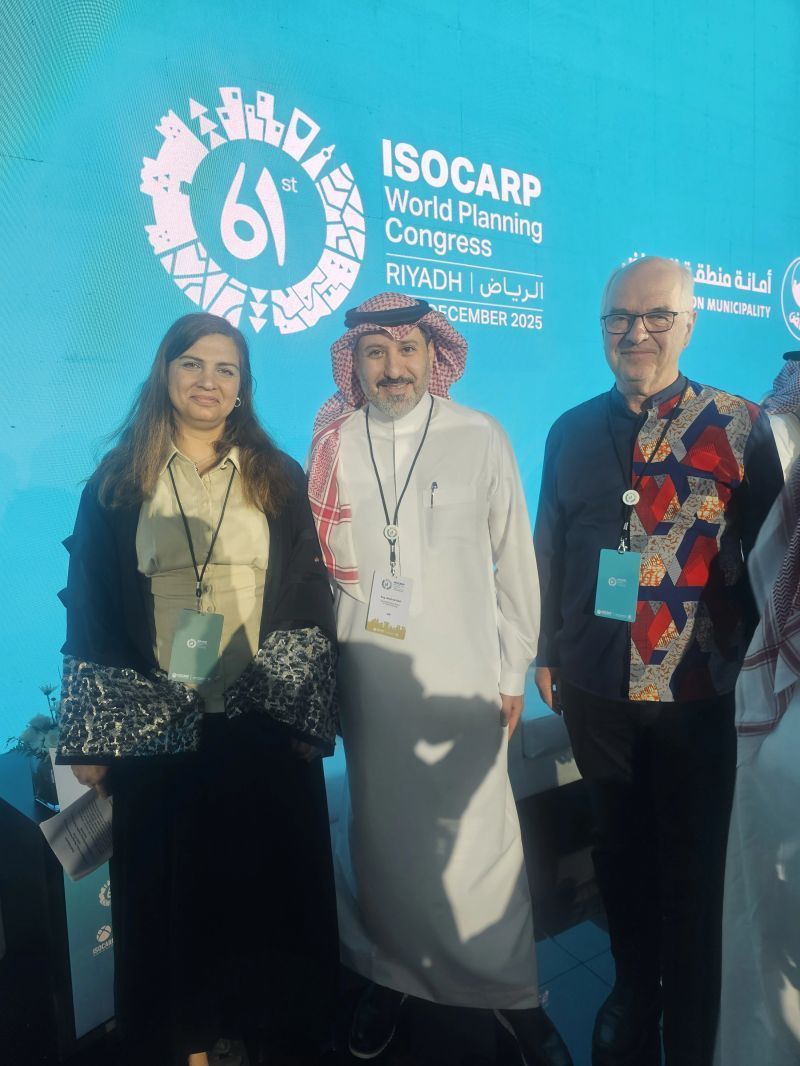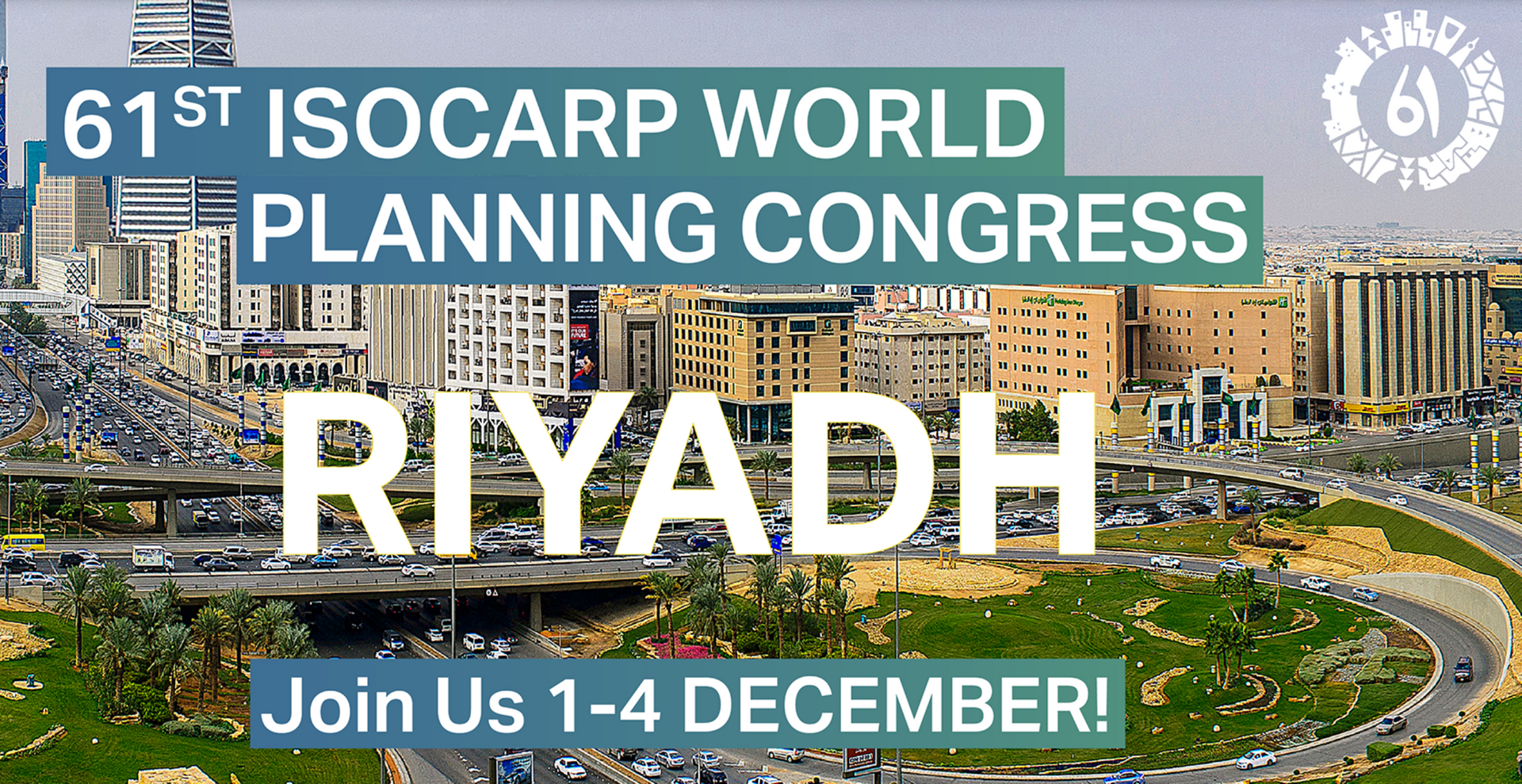Chairing the scientific committee of a member-led global organisation with the vision of making cities and human settlements inclusive, safe, resilient and sustainable
A few days ago Pietro Elisei, President of the International Society of City and Regional Planners ISOCARP asked me to take the lead and chair the Scientific Committee of ISOCARP over the upcoming years. And to the appointment message he added meaningfully ‘Do the right thing! Good luck!’ In this post I reflect a bit on what that suggestion could mean in times of multiple interrelated crises where there is high pressure on urban and territorial development.
The Scientific Committee of ISOCARP is appointed usually for a period of three years to advise on major technical planning issues with professional and academic integrity and competence. Members provide substantive opinion to shape ISOCARP’s proactive and progressive agenda, provide evidence-based analysis to enable Society contributions to international debates, and ensure ISOCARP remains at the forefront of planning thinking and practice. Since 1965, the Society with its currently 700+ individual and about 40 institutional members brings together researchers and practitioners from more than 90 countries with the vision to make cities and human settlements inclusive, safe, resilient and sustainable through integrative participatory urban and territorial planning. Considering that current multiple and interrelated crises make more apparent the need for better coordination, cooperation, planning and development, ISOCARP is the ideal melting pot of disciplines, ideas and cultures to grow up to such a development challenge with an integrated and participative approach. And the Scientific Committee should be a key element on that path within the Society. One is tempted to call ISOCARP an ecosystem but there is certainly no closed system. Instead, ISOCARP rather is an open market for ideas, different opinions and joint work to identify better theoretic and practical approaches for integrated, inclusive and sustainable urban and regional planning.
Are you already a member? If not, consider joining today.
What the challenge and opportunity of such a diverse community means I learnt already in a crash course as junior researcher. In the 1990s, I was scientific editor of the publication series IÖR-Schriften at the Dresden based German Leibniz Institute of Ecological Urban and Regional Development (IÖR) where at the time about 90 researchers from a dozen different disciplines worked. Shortly after the German unification it was an exciting place for researchers from the East and the West and I got to know the full diversity of national and international academics in the field of urban and regional research and planning:
Dr. Petzold, the Founding Director of the IÖR was an architect who loved to focus on design aspects of whatever paper I had to review. Geographers are often also visually oriented and at the IÖR they tended to present their papers by focussing on explaining the legend of maps. In contrast, social scientists rarely had figures and instead, they were proud on their papers often overladen with dense text and complicated and multi-clause sentences. Planning engineers at the institute had again different approaches and some loved to substitute words in their text by mathematical symbols like > or < (in addition to their affection for formulas). Biologists inspired me with their knowledge about frog habitats in cities and lawyers struggled with legal challenges of cross-border institution building e.g. for cross-border natural parks. Their challenge was that all their papers had to be reviewed by me before publcation. My challenge was to read, listen to them and suggest improvements which they could agree on and helped to develop the reputation of the institute.
In those years at the IÖR I got to know, understand and work with many different disciplines and personalities. To describe this time as a broadening of my horizon would be an understatement. Instead, it was mind-blowing and changed the focus of my own professional career: Although, I officially belong to the discipline of political science I practically developped more into a bridge builder between disciplines and an interface manager in the multi-level system of governance. Or, as it meaningfully says on my vising card and website an ‘International Urban and Regional Development Expert’.

I recall the time in Dresden and could add other periods of my professional life in this post because with their diversity and ambitions they have prepared me for my new role as Chair of the Scientific Committee of ISOCARP.
What exactly will be the right thing to do is difficult to say in advance but I am certainly looking forward to embark on an intensive and inspiring journey together with academics and professionals from around the world. As Chair I will be primus inter pares (first among equals). Not more. Not less. Of course, an important limitation of the work stems from the fact that all members of the Committee fulfil their role in addition to other professional obligations and without payment. At the same time this diversity of backgrounds and affiliations offers a high potential for synergy and complementary of work. The better I inspire and empower others the more ISOCARP will benefit from the work of its Scientific Committee.
It is part of the Committee tasks to support the Society, e.g. its Board and Congress Committee. The Scientific Committee drafts Congress declarations and supports juries of ISOCARP Awards like the Gerd Albers Award. By the way, when I worked at the IÖR in Dresden in the 1990s Gerd Albers was Chair of the Scientific Advisory Board of the Institute. He was one of those who inspired me to think and work beyond borders of academic disciplines.
In addition to these support activities the Committee will stimulate dialogue and exchange within and beyond the Society through own papers and other contributions. For instance, it could be interesting if the Committee would organize at the next World Planning Congress in Toronto in fall 2023 a Panel Discussion on ‘The Science of Planning’ to review the contribution of academic work to the development of planning and sustainable cities and regions. The Scientific Committee could better understand after such a session where are the best opportunities for the Scientific Committee to support other ISOCARP activities. Other interesting themes to work on are ‘The planning system we need’ or a comparative analysis and discussion on what different trends in urban and regional planning in different regions of the world can learn from each other. In addition, the Committee should cooperate with other organizations like the Regional Studies Association (RSA) or the Global Planning Education Association Network (GPEAN).
However, I won’t develop the programme of work alone. Instead, I’m starting right now consultations with Committee members and other academics and professionals to jointly identify the priorities for our work in upcoming years. A proposal will then be discussed with the Board of ISOCARP. Probably within the next few weeks we’ll also launch a global call for additional members of the Scientific Committee. Academic and practical excellence will be important selection criteria. Other criteria will include regional and gender representativeness. And based on my own professional experience at the IÖR, EU, UN and in many countries I’ll put major emphasis on inspiring discussion and cooperation among different members of the Committee, the Society at large and the wider community of academics and practitioners. Expectations on a scientific committee should always be realistic but if we are lucky, develop a productive way of cooperation and outreach ISOCARP’s Scientific Committee can orchestrate dialogue and provide basis and impetus for pioneering innovations in the development of integrated, inclusive and sustainable cities and regions. The extended version of ISOCARP's Scientific Committee is in anyway the full dynamism of ISOCARP's 700+ members.
Policies and Governance for Resilient and Sustainable Cities and Regions









